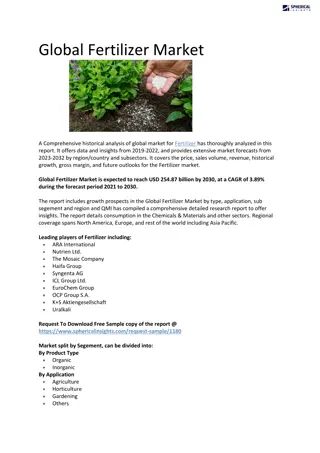
Exploring the Nucleus: Structure, Function, and Importance in Cells
Discover the intricate details of the nucleus, a crucial organelle in eukaryotic cells. From its structure including the nuclear envelope and nucleoplasm to its functions like gene expression regulation and ribosome assembly, delve into the key role it plays in cell biology.
Download Presentation

Please find below an Image/Link to download the presentation.
The content on the website is provided AS IS for your information and personal use only. It may not be sold, licensed, or shared on other websites without obtaining consent from the author. If you encounter any issues during the download, it is possible that the publisher has removed the file from their server.
You are allowed to download the files provided on this website for personal or commercial use, subject to the condition that they are used lawfully. All files are the property of their respective owners.
The content on the website is provided AS IS for your information and personal use only. It may not be sold, licensed, or shared on other websites without obtaining consent from the author.
E N D
Presentation Transcript
Nucleus by Suvasree Sahu
Introduction The nucleus is a membrane-bound organelle found in eukaryotic cells. It serves as the cell's control center, housing the genetic material, including DNA, organized into chromosomes. Through transcription and translation, the nucleus regulates gene expression, determining the production of proteins and various cellular functions. During cell division, the nucleus plays a critical role in ensuring the accurate distribution of genetic material to daughter cells. Additionally, the nucleus contains a nucleolus, involved in ribosome synthesis.
Structure 1. Nuclear Envelope: A double-membrane structure that encloses the nucleus, separating its contents from the cytoplasm. It consists of an outer membrane and an inner membrane with a space between them known as the perinuclear space. 2. Nuclear Pores: Scattered on the nuclear envelope, these are protein complexes that allow the selective exchange of molecules, such as RNA and proteins, between the nucleus and the cytoplasm. 3. Nucleoplasm: The gel-like substance filling the interior of the nucleus, where various components are suspended, including chromatin, nucleolus, and other proteins.
Continue 4. Chromatin: A complex of DNA and proteins, including histones, which packages the genetic material in the form of chromosomes, condensing during cell division. 5. Nucleolus: A distinct substructure within the nucleus where ribosomal RNA (rRNA) synthesis and ribosome assembly take place. 6. Nucleoplasmic Reticulum (optional): In some cells, an extension of the endoplasmic reticulum can penetrate into the nucleus, forming a network known as the nucleoplasmic reticulum.
Function 1. Housing genetic material (DNA) and controlling gene expression. 2. Facilitating DNA replication and repair during cell division. 3. Transcribing DNA into RNA molecules for protein synthesis. 4. Assembling ribosomes in the nucleolus for protein production. 5. Directing cellular differentiation during growth and development. 6. Regulating the cell cycle for accurate division and distribution of genetic material.






